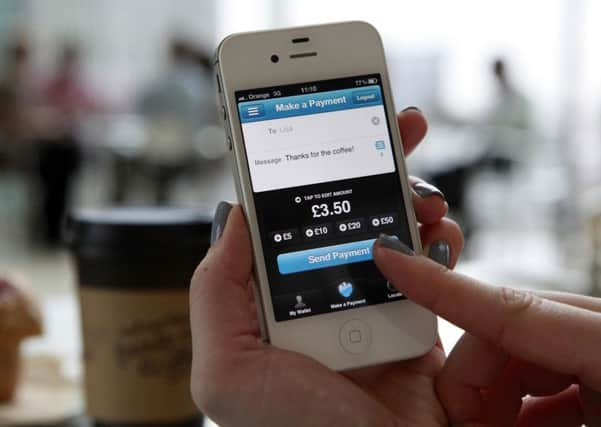Getting left behind in banking revolution


Did I miss the daily flurry of texts and emails? Not a bit. But had I been away for longer, my sense of liberation would probably have given way to frustration. Technology has transformed our daily lives to the point that it can be hard to get by without it.
The digital transformation in banking is a case in point – it’s strange to think there was a time when I used to rely on ATMs to tell me my balance.
Advertisement
Hide AdAdvertisement
Hide AdNow it feels like every other week a whizzy new fintech company is springing up with a sleek app-based offering that promises to ‘disrupt the market’ and transform the way we manage our money. And the veteran financial brands too are increasingly offering products and services that can only be used online or with a smartphone app.
As someone with six different mobile banking apps who compulsively checks most of them every day, I can vouch for their incredible convenience. Like millions of others, I’ve been happily swept up in the digital banking revolution – but not everyone has embraced it.
Feedback from Which? Money readers suggest that there are plenty of people who lack the confidence to manage their money in this way – either because of a lack of digital capability, or a lack of trust in the systems themselves. And then there are those who simply prefer to stick to more traditional methods of banking.
But they can be disadvantaged for doing so – and not just because the dwindling bank branch network is making it more challenging if all you want to do is speak to a member of staff face to face.
Advertisement
Hide AdAdvertisement
Hide AdSavers, for example, can miss out on top returns if they aren’t prepared to forgo branch access. Analysis by my colleague found that interest rates on online-only accounts outstripped branch-based accounts by an average of 0.46 per cent in the instant-access market.
Even accounts that aren’t online-only often require you to supply an email address and mobile number as part of the application. This won’t be a problem for the majority of people, but a major change to the way online payments are verified, which puts mobiles at the heart of security checks, could prove more problematic in some cases.
At the moment, when you shop online and reach the checkout stage, you’re rarely asked for any information beyond your card details. In a tiny proportion of transactions – usually those that fall outside your typical spending patterns – you might be put through an extra security screen for Verified by Visa or Mastercard Secure Code and asked to enter a password.
But the increase in online card fraud has shown that passwords alone are not a strong enough defence. Under EU rules, banks will soon be required to confirm it’s really you making a purchase by using at least two independent factors of authentication – or ‘2FA’ for short.
Advertisement
Hide AdAdvertisement
Hide AdThese need to be something only you know (a password or Pin), something you possess (a card reader or mobile phone), or something only you are (a biometric form of identification, eg your fingerprint).
Push notifications, which are sent via mobile banking apps, are the most secure form of 2FA. They show the transaction amount and payee, and you’ll typically authorise the payment by fingerprint ID. Alternatively, banks can send a one-time passcode, typically by text, which you’ll need to enter during the checkout process.
You won’t have to go through this process for every payment – recurring payments or those under €30 will typically be exempt – but the extra layer of security will become a fairly common feature of online shopping after September 14.
To make sure online shopping goes seamlessly, you’ll need to check your bank has an up-to-date mobile number for you. No one can argue with improvements in security, but if you live in an area with patchy mobile coverage (or don’t own a mobile at all), you may well be feeling a little less enthusiastic about these changes. And there’s an unhelpful lack of consistency among banks in terms of how they’re planning to accommodate those in that situation.
Advertisement
Hide AdAdvertisement
Hide AdIt’s possible for one-time codes to be sent to landlines or via email, but only a handful of banks told us they’re considering these options. In some cases, customers who don’t use a mobile will have to call their banks using a landline to go through the final stages of the online purchase process.
Only one provider told us it’s planning to expand the use of its internet banking card readers to generate passcodes, while several said they haven’t yet decided what alternatives they’ll offer.
There’s no denying that the future of banking is digital, and is increasingly shifting towards mobile devices – industry analyst CACI predicts that by 2023, 35 million people will manage their current accounts by app. But if the responses above are anything to go by, it seems banks could be doing more to manage the transition and avoid leaving some of their customers behind.